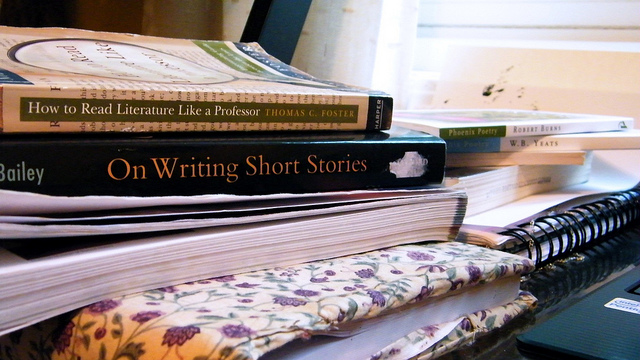“Human history becomes more and more a race between education and catastrophe” (H. G. Wells)
Francis Butler, History major with Revolutionary Era Studies Certificate via the McCormick Center for the Study of the American Revolution, has had his share of experience in the “doing” of history.
What drew Francis to Siena was our McCormick Center for the Study of the American Revolution. He knew he wanted to study history and he knew that Siena’s McCormick Center was the place to get the best education. Not only does he like studying the American Revolution and the Civil War academically, he enjoys it on a recreational level as well. So much so that as a Freshman, while the rest of us messed around and used “I’m still adjusting to being here” as the excuse for everything, he was getting involved as the Program Assistant at the McCormick Center. He was getting his friends and peers involved in the history he loved and at the same time he was expanding the program. He was seen as a student model and recruiter.
In his Sophomore year, Francis wrote paper called “To Bleed for a Higher Cause: The Excelsior Brigade and the Civil War” discussing what motivated New York’s soldiers in the Excelsior Brigade fought in the Civil War. Little did he know, this paper would take him all the way to the New York State History Association’s Annual Conference in June 2013. With a combination of his experiences in the McCormick Center and his education from the history program at Siena, he presented his work in front of historians, teachers, and people from museums from all over New York State. With his trip sponsored and paid for by the McCormick Center, Francis experienced his first academic conference and delivered his research in a professional setting.
When I asked Francis what classes here at Siena were the most rewarding and he explained to me that he has taken many upper level seminars, as far up as 300-400 level. These are the classes that challenge him to think like a historian. These classes built upon his foundational knowledge and invited him to explore historical questions through reading and research. It were these courses that pushed Francis to think and work as a historian.
As a student in the School of Liberal Arts, of course I had to ask him, do you feel that your abilities to think critically have been improving since being here? And his answer was absolutely. He explained how the opportunities extended to him to think critically pushed him to be a better researcher, a better writer, and a better thinker. While he was thinking and writing as a historian, working as a McCormick Center student empowered him to approach problems creatively. So much so he even applied the work of his Marketing class to create a marketing plan for the McCormick Center to increase awareness on campus.
The McCormick Center’s curriculum combines classroom learning with application in the field. Consequently, Francis, as a McCormick Center student, has taken both business, history, and liberal arts coursework that have challenged him and other McCormick Center students to think in diverse and creative ways. Two of the best examples from Francis’s undergraduate career that tie the essence of a liberal arts education and the value of the McCormick Center’s programs are his work on a National Endowment for the Humanities (NEH) grant with the McCormick Center and his involvement in the Urban Scholars Mentor Program.
- In August 2012, the McCormick Center was awarded a Landmarks of American History and Culture Workshop for School Teachers grant from the National Endowment for the Humanities (NEH) for $175,000. Francis, as the co-author of the proposal with the McCormick Center’s director Jennifer Dorsey, Ph.D, helped research and write the narrative, create the grant’s proposed budget, and establish a schedule for the program. The grant required Siena College to integrate historical learning with important “landmarks” in the Capital Region. Focusing on the theme of American Shakerism, Siena’s program, entitled Heaven on Earth: Shakers, Religious Revival, and Social Reform in America, recruited 80 K-12 school teachers in all fields from across the nation (split into two groups of 40, brought in in two sessions) to come to Siena and learn about the Shakers. The setting couldn’t be more perfect: Albany, the birthplace of the American Shaker movement and close to Shaker sites such as Mount Lebanon and Hancock Shaker Village in Massachusetts, was ideal for this program. Francis worked primarily as the logistical coordinator for the two weeks of the program in addition to his role in the planning process. This whole experience required him to integrate his ability to research and write as a historian and the skills he learned in his business classes about management and marketing to successfully help the McCormick Center execute this program.
- His second big accomplishment was working as a mentor-leader in the Urban Scholars Mentor Program. Although the program is designed to promote youth engagement with STEM (Science, Technology, Engineer, and Math), Francis took it upon himself to tie in history to that mix. With his passion for history he wanted to expose the program’s youth participants to the history he loves so much. After putting their heads together, Francis and some of the other STEM program members designed an interactive class incorporating both technology and history. The class used Minecraft to create a virtual Valley Forge. The students read primary documents relating to the soldiers’ experiences in Valley Forge and used that information to build it in the Minecraft world. “There are many ways to get into history, these kids are used to studying math and using technology so this was perfect,” Francis said. The kids used their math skills to figure out the dimensions of the cabins, critical thinking when they analyzed what they read, and logic all while learning history.
Francis has had a very successful three years so far at Siena and only time will tell what he will accomplish in his last year. With his future he plans to go into curriculum development, which is how education systems go about finding what should be taught. He plans to orient himself to the profession by teaching in charter schools to further his understanding of classroom education before hopefully progress to curriculum development. He is confident about his future because he is secure in his education from Siena. He has learned how to write effectively, construct an argument and think critically about it. He now thinks at a higher level, all thanks to his liberal arts education here at Siena College.
For those of you who are interested in the McCormick Center click here.


